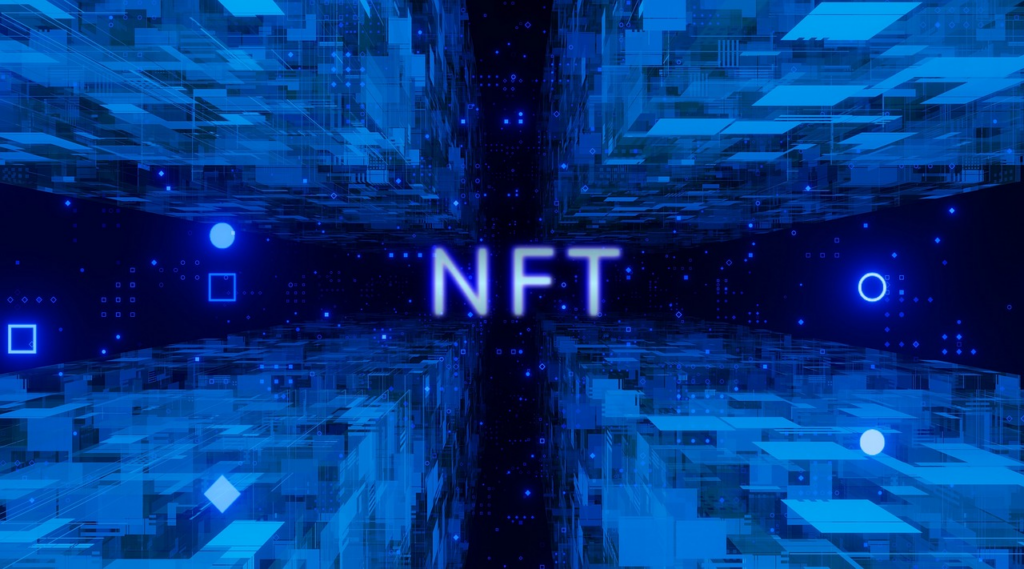In recent years, the digital world has been rocked by the rise of NFTs, short for "Non-Fungible Tokens". But what are these NFTs and what are they for? In this article, we'll explore in detail the concept behind NFTs, how they work and their applications.
What is an NFT?
An NFT, or Non-Fungible Token, is a unique and indivisible digital representation of an asset, stored on a blockchain. What differentiates an NFT from other types of tokens, such as traditional cryptocurrencies, is its uniqueness and non-fungibility. While fungible cryptocurrencies, such as Bitcoin or Ethereum, are interchangeable and each unit is the same as another, NFTs are unique and cannot be replaced by other tokens of equal value.
In other words, each NFT has unique characteristics that distinguish it from any other token. These characteristics can include details such as creation date, authenticity, ownership history and even metadata specific to the digital asset it represents, such as the author of a work of art or the creator of a video.
NFTs are created and managed through smart contracts on the blockchain, which are computer programs that automatically execute predefined rules when certain conditions are met. These smart contracts guarantee the authenticity, ownership and transferability of NFTs, allowing users to buy, sell and trade these assets safely and transparently.

It's important to note that NFTs don't store the digital asset itself, but rather a record that proves ownership of the asset. For example, when you buy an NFT that represents a digital work of art, you are not purchasing the work of art itself, but rather the right to be recognized as the official owner of that work of art on the blockchain.
NFTs have been applied in a variety of sectors and industries, including digital art, music, videos, games, collectibles and even real estate and other real-world assets. They offer new opportunities for creators, artists and collectors to monetize and value their digital works, as well as providing investors with new ways to diversify their portfolios and participate in emerging markets.
How do NFTs work?
NFTs work within the context of blockchain technology, which is a distributed and immutable data structure that records transactions securely and transparently. Each NFT is created and managed through smart contracts, which are computer programs that run on the blockchain. See a more detailed explanation of how NFTs operate:
Setting up the NFT
An NFT is created via a smart contract on the blockchain. The creator of the NFT specifies the details of the digital asset that will be represented by the NFT, such as title, description, metadata and, in some cases, a copy of the digital asset itself.
Blockchain registration
After creation, the NFT is registered on the blockchain, where all relevant information about it is stored permanently and transparently. This includes details such as unique identification (ID), current owner, transaction history and digital asset metadata.
Ownership and Transfer
Once registered on the blockchain, the NFT can be bought, sold or transferred between users. These transactions are carried out through smart contracts, which ensure that the transfer of ownership is secure and irrevocable.
Validation and Authenticity
All transactions involving NFTs are verified and validated by the blockchain network, ensuring that each NFT is authentic and unique. This means that NFTs cannot be falsified or duplicated, providing users with security and reliability.
Interaction with Digital Assets
Although NFTs do not store the digital asset itself, they serve as a record of the asset's ownership and authenticity. NFT owners can interact with the digital asset in various ways, such as displaying it in virtual galleries, playing videos or accessing exclusive content.
Secondary Market
In addition to the initial transactions of creating and selling NFTs, there is a secondary market where NFTs can be bought and sold between users. These secondary markets operate on specialized platforms that facilitate the trading of NFTs, offering features such as listings, auctions and liquidity.
What are NFTs for?
NFTs have many applications and benefits:
Digital Collectibles and Art
One of the most popular applications of NFTs is as digital collectibles and in the art industry. Digital artists can create unique works and sell them as NFTs, giving buyers exclusive ownership of these works. This revolutionizes the art market, allowing artists to reach a global audience without the need for traditional intermediaries such as art galleries or auction houses.
- Empowering Creators: NFTs provide digital artists and creators with a new way to monetize their work, bypassing traditional art industry intermediaries such as galleries and auction houses. They can create unique works of art, videos, music or other types of digital content and sell them directly as NFTs to their fans and collectors.
- Authentic Digital Property: NFTs provide irrefutable proof of authenticity and ownership for digital works of art. Each NFT is registered on the blockchain, where all transactions related to it are recorded transparently and immutably. This gives collectors the confidence that they are acquiring an original and exclusive work.
- Global Access and Inclusion: Through NFTs, artists have the ability to reach a global audience without the physical and geographical barriers associated with traditional art galleries. This opens up opportunities for emerging and marginalized artists to be discovered and valued by a wider community of collectors and art enthusiasts.
- New Business Models: NFTs are inspiring new business models in the art industry, such as the sale of fractional artwork tokens, which allow multiple investors to own a share of a valuable artwork. In addition, artists can incorporate clauses into smart contracts that grant them a percentage of future sales whenever the artwork is resold on the secondary market.
- Interactive and Immersive Experiences: NFTs also allow artists to create interactive and immersive experiences around their artworks. For example, an NFT can include exclusive access to a virtual event, a live performance or an augmented reality experience related to the artwork.
- Appreciation and Investment: For collectors, NFTs can represent an investment opportunity, with the potential for appreciation over time. The value of a digital work of art can increase based on factors such as the artist's reputation, the rarity of the work and market demand, offering investors the chance to profit from their acquisitions.
Tokenization of Real World Assets
The tokenization of real-world assets is one of the most interesting and innovative applications of NFTs. It involves representing physical assets, such as real estate, works of art, vehicles, commodities and even parts of companies, through non-fungible tokens on the blockchain. Here are some of the ways in which the tokenization of real-world assets is impacting different sectors:
- Accessibility and Liquidity: By tokenizing real-world assets, they become more accessible and liquid for a global audience of investors. For example, tokenizing a property allows investors to buy and sell parts of that property in smaller fractions, making property investment more accessible to those who cannot afford to buy an entire property.
- Property Fractionalization: Tokenization allows the fractionalization of real-world assets into smaller parts, which facilitates the diversification of investment portfolios. Investors can acquire parts of various assets, reducing risk and increasing the diversification of their investments.
- Transparency and Traceability: The blockchain offers transparency and traceability for transactions involving tokenized assets. All transactions are recorded permanently and immutably on the blockchain, providing a clear record of ownership and transaction history for each tokenized asset.
- Reducing Costs and Intermediaries: The tokenization of real-world assets can reduce the costs associated with buying, selling and maintaining these assets. It eliminates intermediaries such as brokers, lawyers and real estate agents, thus reducing fees and administrative costs.
- 24/7 Trading on Global Markets: Tokenized assets can be traded 24/7 on global markets, providing greater liquidity and trading opportunities for investors in different time zones and geographical regions.
- Governance and Property Rights: The smart contracts used to tokenize real-world assets can incorporate governance and property rights clauses. This allows investors to participate in decisions related to the asset, such as voting on improvements, leasing or sale.
Rewards in Games and Entertainment
Rewards in games and entertainment are an exciting area of application for NFTs, providing new forms of engagement, monetization and appreciation within these ecosystems. Check out some of the ways NFTs are being used for rewards in gaming and entertainment:
- Digital Game Items: In many online games, NFTs are used to represent unique digital items, such as character skins, weapons, clothing, accessories and other collectibles. Players can earn these items as a reward for completing challenges, reaching milestones or participating in in-game events.
- Ownership and Valuation of Virtual Assets: NFTs allow players to uniquely and authentically own and value their virtual assets. Items acquired as NFTs can be traded or sold on secondary markets, where their value can increase based on demand and rarity.
- Integration with Game Economies: NFTs are being integrated into game economies, allowing players to earn, buy, sell and exchange digital items directly within the game or on external platforms. This creates a vibrant, decentralized economic ecosystem around the game.
- Personalization and Expression: NFTs offer players the opportunity to personalize and express their identity within games. They can collect exclusive items, create unique avatars and customize their own gaming style with digital items that reflect their personality and preferences.
- Special Events and Collaborations: NFTs are often used in special events and collaborations between games and brands. For example, a game might release a limited edition of character skins based on a famous movie franchise, offering players the opportunity to acquire exclusive items and collectibles related to the movie.
- Community Incentives: NFTs are also used as incentives for the player community, offering exclusive rewards to those who contribute to the growth and success of the game. This can include rewards for participating in events, gameplay feedback or creating fan content.
Authentication and Property Tracking
NFTs are ideal for authenticating and tracking ownership of digital items such as music, videos, photographs and memes. They provide transparent and irrefutable proof of ownership on the blockchain, which can be especially valuable for creators who want to protect their copyright and ensure they are compensated for their work.

Marketing and Engagement Tools
Companies and brands are beginning to explore the use of NFTs as marketing and audience engagement tools. They can create exclusive NFTs as part of advertising campaigns, product launches or special events, offering consumers the opportunity to own something unique and collectible related to the brand.
Investment and Speculation
Some investors see NFTs as an investment opportunity, hoping that the value of certain NFTs will increase over time. As with other assets, speculation on NFTs can lead to significant price fluctuations, creating profit opportunities for those who buy and sell at the right time.
A new frontier in the digital world
NFTs represent a new frontier in the digital world, offering an innovative way of owning, trading and valuing digital assets. Although there is still much to explore and develop in this space, NFTs have the potential to transform the way we interact with art, games and financial assets. If you're interested in exploring this exciting new world, now is the perfect time to start learning more about NFTs and their possibilities.
See also: 10 profitable businesses in Brazil
April 3rd, 2024

She has a degree in Literature - Portuguese/English, and is the creator of the Escritora de Sucesso website. As a writer, she seeks to expand everyone's knowledge with relevant information on various subjects. At Trend-Topics, she brings news and content ranging from entertainment to the country's economic situation.






